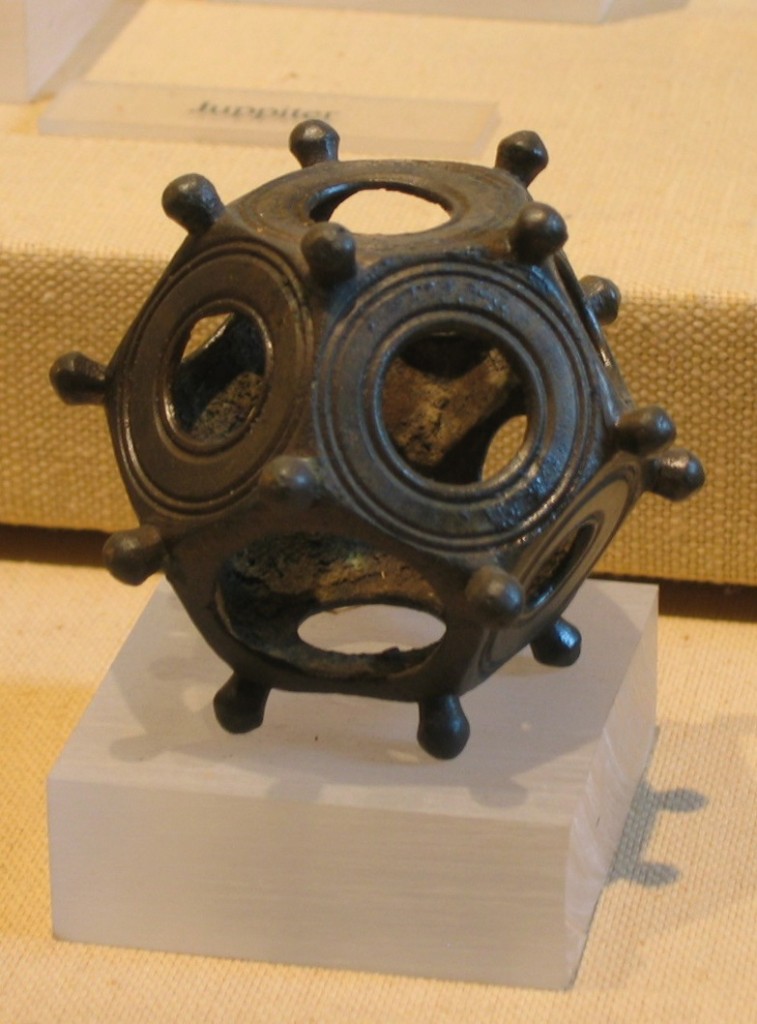Roman Whatzit

Hundreds of them have been discovered — in England; throughout France and Germany; and extending into Hungary, as seen on this map. They are old, dating back to the second or third century; and durable, made of stone or bronze. They range in size from 4 centimeters in diameter to 11. Each consists of a dozen pentagons, arranged in one cohesive shape. Each pentagonal size has a hole in the middle, leading to the object’s hollow center.
These artifacts are called roman dodecahedrons — and no one knows what they were used for.
Roman civilization, in general, is (relatively) easily studied because the Romans kept very good written records regarding their lives, culture, and technology. But not in the case of the dodecahedron. We are left with speculation and without consensus.
Some theories? Plutarch, the Greek historian, claimed that the device was used to aid in following the zodiac, but modern archaeologists believe that the ornamental knobs on the structures make that unlikely. One was found with wax in the middle, lending credibility to the theory that the dodecahedron was a type of candle holder, but the discovery of wax appears to be unique to that one instance. Some believe that it was used for religous purposes, noting that one was found in a burial ground. And one website — which published the map linked-to above — makes the case that the dodecahedron was used to measure the optimal date to sow grain.
But in the end, it’s anyone’s guess.
Bonus fact: At an early age, Roman emperor Julius Caesar was kidnapped by pirates — and upon securing his freedom, extracted his revenge. Wikipedia explains: “On the way across the Aegean Sea, Caesar was kidnapped by pirates and held prisoner. He maintained an attitude of superiority throughout his captivity. When the pirates thought to demand a ransom of twenty talents of silver, he insisted they ask for fifty. After the ransom was paid, Caesar raised a fleet, pursued and captured the pirates, and imprisoned them. He had them crucified on his own authority, as he had promised while in captivity—a promise the pirates had taken as a joke. As a sign of leniency, he first had their throats cut.”
From the Archives: The Buzzer: It buzzes. But why?
Related: Alexander’s Star, a Rubik’s Cube-like puzzle, but using a dodecahedron instead of a cube. The goal is to shuffle the 30 faces so that each star is surrounded by one color each. Good luck — there are 7.24 x 1034 possible combinations.

Leave a comment